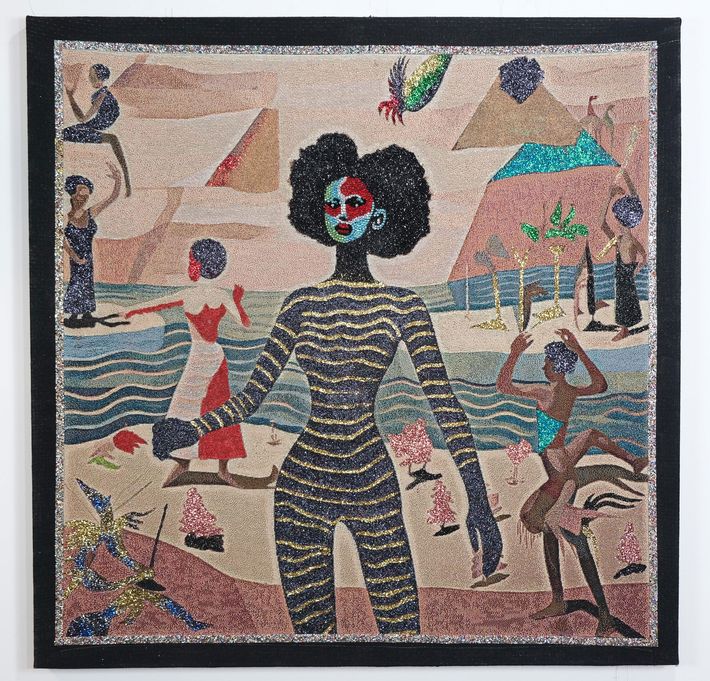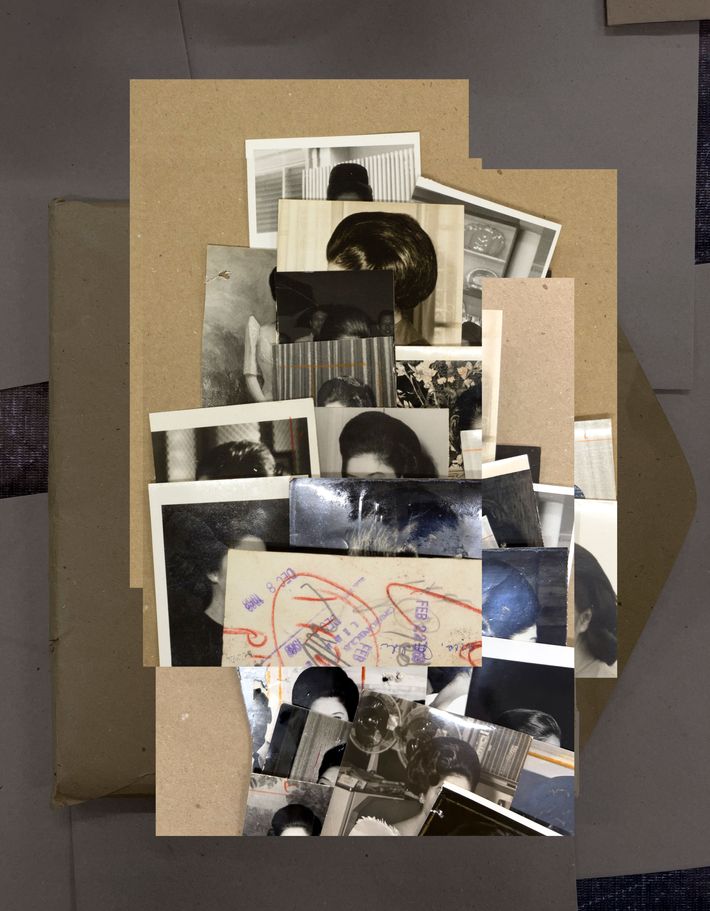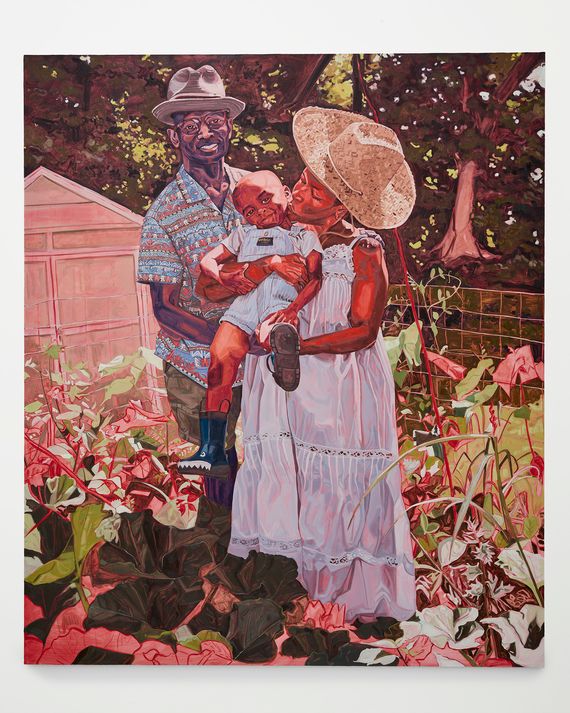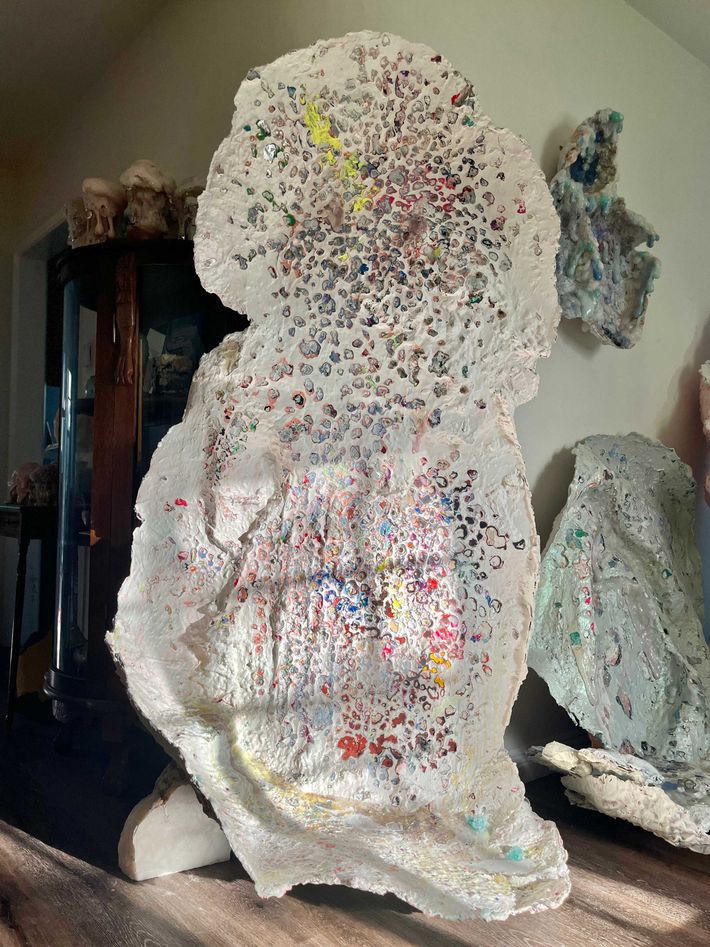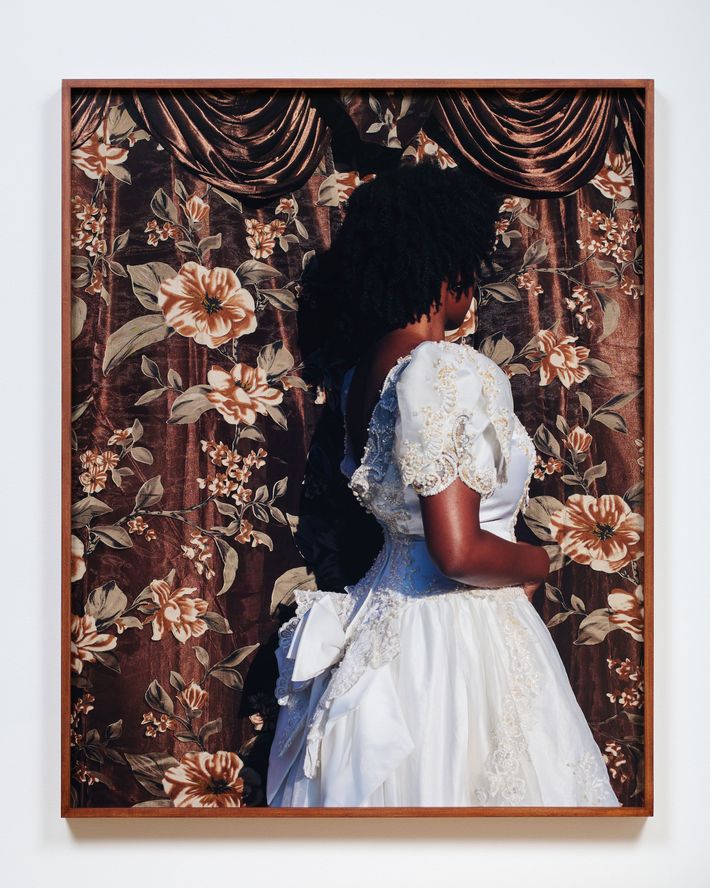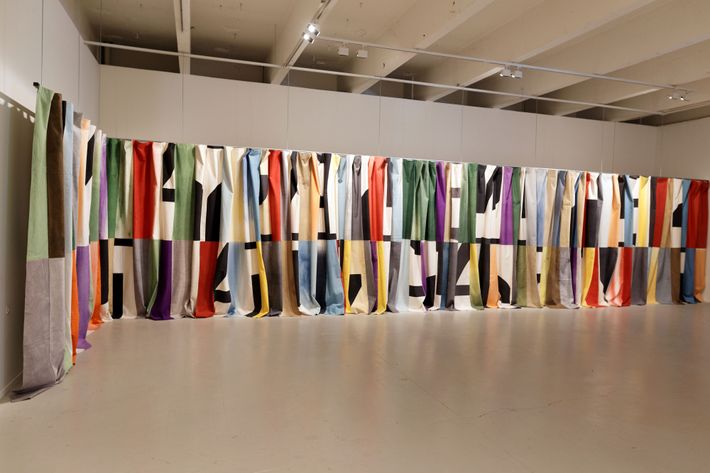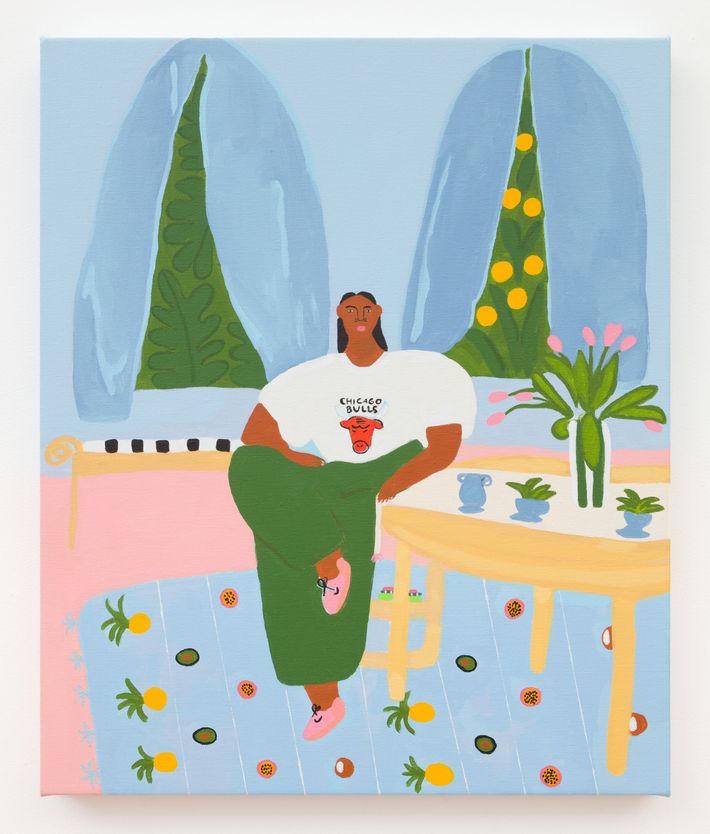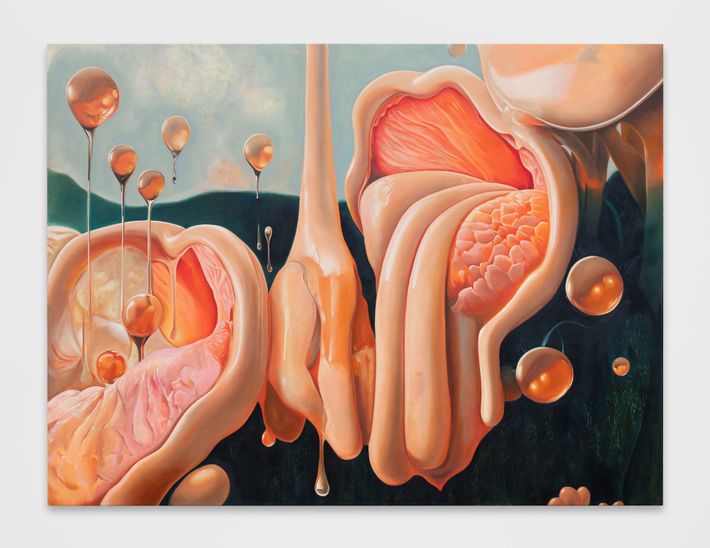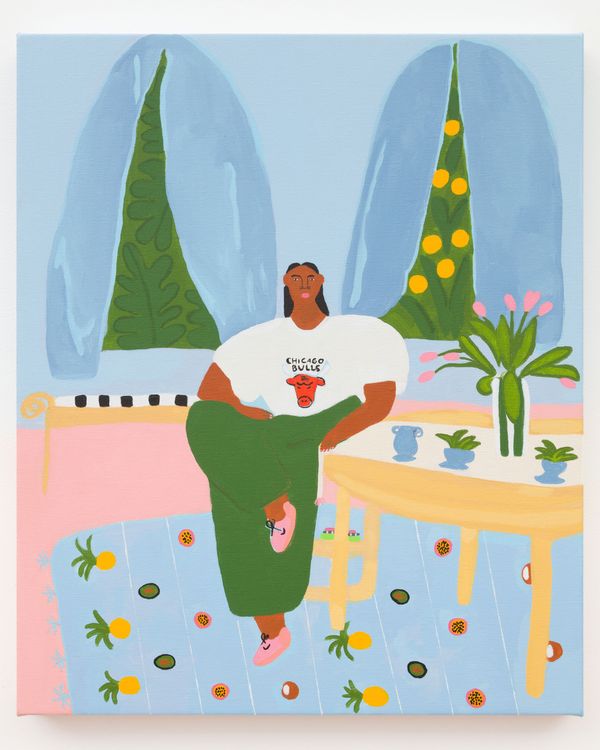
The fifth edition of the Frieze Art Fair in Los Angeles (on view from February 29 to March 3) will welcome the presence of 95 galleries from 21 countries, with 13 of these galleries showing at Frieze L.A. for the first time. With this level of stylistic and regional range in mind, the Cut has collected a group of ten women artists — working across cultures, identities, ages, and mediums — who are exhibiting work at this year’s fair, with the hope that zooming in on these creators will make the labyrinth of art on display a little easier to navigate. Whether these artists are emerging or have already eased into a level of established recognition, they are all complicating and beautifying the human experience in ways uniquely their own, making strong statements with work worth taking a closer look at this year.
Akea Brionne debuts a rich collection of familial textiles
Artist Akea Brionne will be showing new works in the fair’s “Focus” section (curated by Essence Harden, visual arts curator and program manager of the California African American Museum), dedicated to U.S. galleries that have been operating for under 12 years. It’s the first appearance at the fair for the artist and the gallery. Brionne’s textiles, which transform archival family photographs into tapestries created on a digital jacquard loom, are realistic depictions of the surreality of life and loneliness, often likened to Edward Hopper’s urban interiors, deserted landscapes, and anonymous figures. Brionne’s textile approach to creating distorted realities (sometimes accentuated with rhinestones) is part of a long, rich tradition of women artists using thread to create art. Weaving has long been somewhat pejoratively considered “women’s work,” despite the technical difficulty of it (enter Ada Lovelace, the mathematician who developed early computer coding based on jacquard-loom technology). The use of fabric to create quilts has also historically been employed by Black women as a form of storytelling and heirloom creation. Brionne is an exciting up-and-coming artist whose work engages the texture of womanhood and takes an ecological look at family histories.
Akea Brionne is represented by Lyles & King gallery
Stephanie Syjuco reimagines historical archives for modern audiences
Oakland-based, Filipino American artist Stephanie Syjuco’s work is presented by Manila’s Silverlens Galleries in their first appearance at the fair. Syjuco’s entirely new collection of photographic works explores the material memory of archives, using images from the now-defunct Manila Chronicle newspaper (1945–1972) to create collages that merge text clippings and media images to illustrate the layering effect of history throughout time. Considering today’s media landscape, where news is not only employed as a public service but also as part of an algorithmic formula and political pawn, the artist’s focus on Manila’s postwar era — and what happens to the creation and dissemination of citizenship narratives when martial law obstructs the continuation of public information sharing — brings her work into clearer view. Syjuco’s decision to overlay digitized newspaper clippings and propaganda with images of common decorative plants is a commentary on how the deceptively apolitical presence of beauty often obscures the truth of power. Haunting and probing with a mixed-media sensibility, Syjuco’s historical research (she was a Smithsonian artist research fellow at the National Museum of American History from 2019 to 2020) and artistic instincts are on full display in these photographs that superimpose the natural world over the unnaturalness of authoritarian violence.
The humanity of Jordan Casteel’s portraits
Jordan Casteel’s larger-than-life portraits have drawn much attention and acclaim in recent years; they often feature subjects from myriad backgrounds in a range of settings: street vendors in Harlem, the artist’s former Yale classmates, and so on. Casteel’s works, which often feature Black subjects (sometimes in nontraditional gender expressions), are scaled the way they are by design. The artist’s richly painted canvases literally take up space and color the white walls of traditional art galleries. Her subjects, who often break the fourth wall and stare directly at the viewer, dare onlookers to tell them they don’t belong. Rendered with texture and deep feeling, Casteel’s paintings are realistic yet idealized snapshots of everyday life and celebrate the quotidian magic of Blackness.
Laura Soto makes whimsical objects out of recycled matter
Sculptor Laura Soto’s creations are charming works of imperfect assemblage. The artist often combs beaches for shells and searches the streets for discarded detritus to create fantastical mixed-media sculptures made of resin, paper, acrylics, and more, which are as accessible as they are impossible to duplicate. Her attraction to what’s been forgotten infuses her work with a particular type of empathy — one that makes you want to root for the aesthetic underdog — and her manipulation of material and form (to create objects like books and large-scale shells) is an inspiring meditation on the power of imagination.
Sarah Cunningham lays it on thick
Sarah Cunningham’s abstract paintings, some of which take years of layered paint to achieve the depth and thickness of texture present on the canvases, are celebrated for their ability to represent the vastness of pastoral landscapes and the psychological space of the mind in equal measure. Her use of line and color is heavily layered and considered, bringing a rich, inspired nuance to gallery walls. Cunningham’s references range from literary texts to the natural environment surrounding her Nottingham hometown, and her paintings collapse time, space, and material to tell a fragmented yet vivid story of the in-between — the gulf between the human psyche and the universe writ large. Much like a forest promises much more activity beneath the surface (buzzing life and the potential for danger) than might initially appear, Cunningham’s paintings tell a deeper story the longer they are observed: deceptively abstract, rendered with precision.
Widline Cadet makes photographs of memories and myths
In this year’s “Focus” section, photographer Widline Cadet’s solo presentation from Shulamit Nazarian is highly anticipated: The Haitian-born, Los Angeles-based artist explores regional details like light, color, flora, and architecture as a way to string a thread connecting her native country to the coastal oasis that is California. Cadet’s work is at once an escapist study of paradise and a critical look at migration, memory, and erasure; her self-portraits, still lifes, and landscapes exist in the liminal space between homes: one inherited, one chosen. Cadet makes the myths of the Caribbean visible through her haunting renderings of inherited stories and rituals. She places herself along a spectrum of time and space with her photographs as a way to exist in two places at once: Haiti and the U.S., past and future. Cadet’s practice also includes video, sound, sculpture, performance, and installation, making her multifaceted approach to creating visual archives for the future one to watch.
Pia Camil’s sculpture of sustainability
Mexico City–born and –based Pia Camil works across painting, sculpture, installation, and performance, all of which explore commerce (by way of clothing) and collaborative, participatory viewing experiences. In this year’s fair, her 2020 installation piece Multi-Organism (Dots) will be presented by OMR Gallery; it displays several pairs of denim pants suspended in space, bundled and hung with industrial materials that wink at large-scale manufacturing processes. Camil purchases secondhand clothes through a range of bartering exchange systems in Mexico City and combines them to blur the line between personal and community memory. (Sisterhood of the Traveling Pants, anyone?) This work in particular is almost an infinity mirror of material history; Camil stuffs denim inside of denim in order to replicate questions of individuality and excess.
The quiet luxury of Lilian Martinez’s resting women
Lilian Martinez, a Los Angeles–based acrylic painter, will present new works via Ochi Gallery at the fair. Martinez’s Matisse-esque flat figures in her new collection of paintings depict brown women at rest in various leisure spaces: gardens, homes, museums, and the like. Inspired by the “Focus” section’s “ecology” theme, the artist explores environments of “everyday pleasure” as a way to make a political statement about the rarity of seeing brown bodies safe and at peace, rather than at work or at war. Rubens-like in their size and voluptuousness, Martinez’s women celebrate the female form and the luxury of simply existing at our most natural and uninhibited.
Meeson Pae explores the system of the body
Meeson Pae’s presence in Anat Egbi gallery’s group show focused on spotlighting artists from historically overlooked backgrounds (alongside the late lesbian artist Gloria Klein and Palestinian American Jordan Nassar, whose handiwork includes woodwork and traditional tatreez embroidery), situates the emerging artist as a self-defining force. Pae works across mediums, often using computer-generated systems (for 3-D renderings) before painting images on canvas to explore the connection between the body and technology. Her visceral depictions of the body’s interior (which she likens to a machine) illustrate how rapidly and effortlessly man and nature have collapsed into one another; bodily fluids are pieces of data, ripe for interpretation along the spectrum of biology and mechanics. Ultimately, Pae’s enigmatic exploration of flesh and tech creates abstract portraits of what it means to be alive today.
Claudia Keep’s paintings celebrate the beauty of everyday life
Painter Claudia Keep’s treatment of the quotidian is an artful reminder to appreciate life’s simplicity without compromising the poignant quality of real-life details and the power of mood. At this year’s fair, her work will be part of a group show from Parker Gallery; Keep’s paintings are striking in their ability to represent moments frozen in time that ask the viewer to just see, rather than meditate on a larger narrative that may or may not be all that essential to feel and understand the painting. Her renderings of objects (teacups, rock collections) and scenes (a rainy night in Los Angeles, a spider spinning its web) are achieved from studying photographs, which gives each painting a precise level of realism. Keep’s painting of an unmade bed of white sheets, featured in the winter 2023 issue of The Paris Review, exemplifies the subtle power of looking at moments created by humans in motion.


